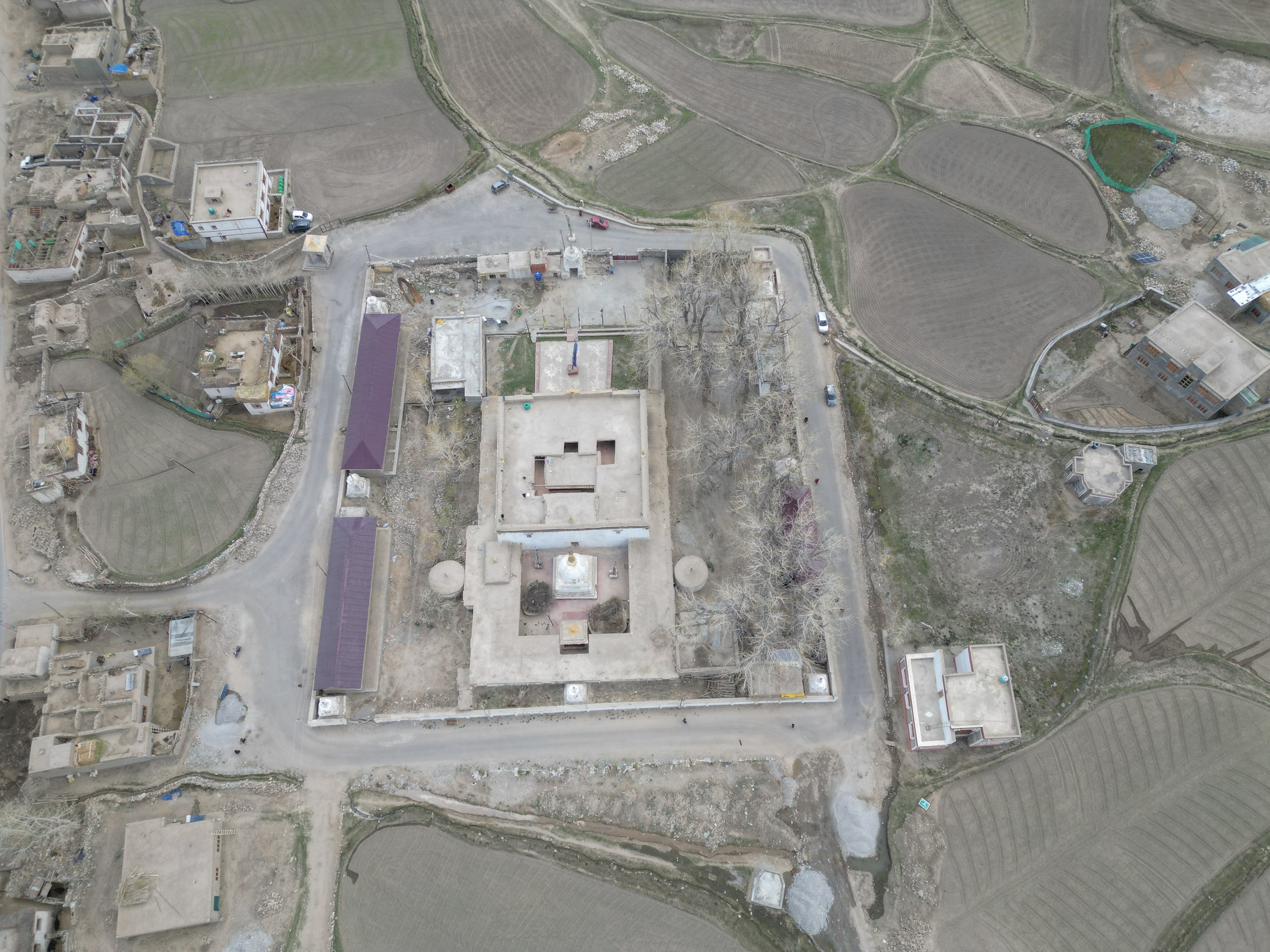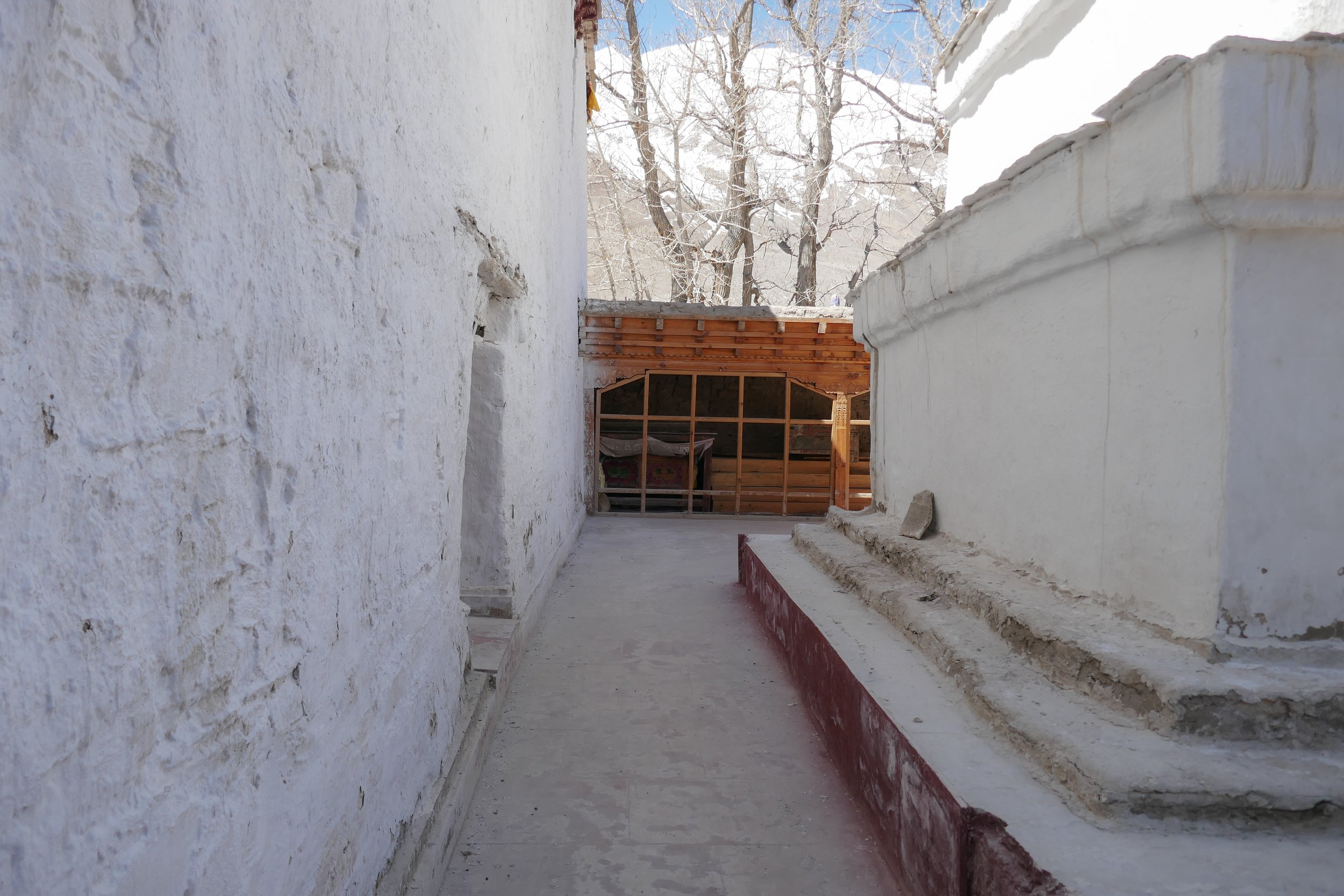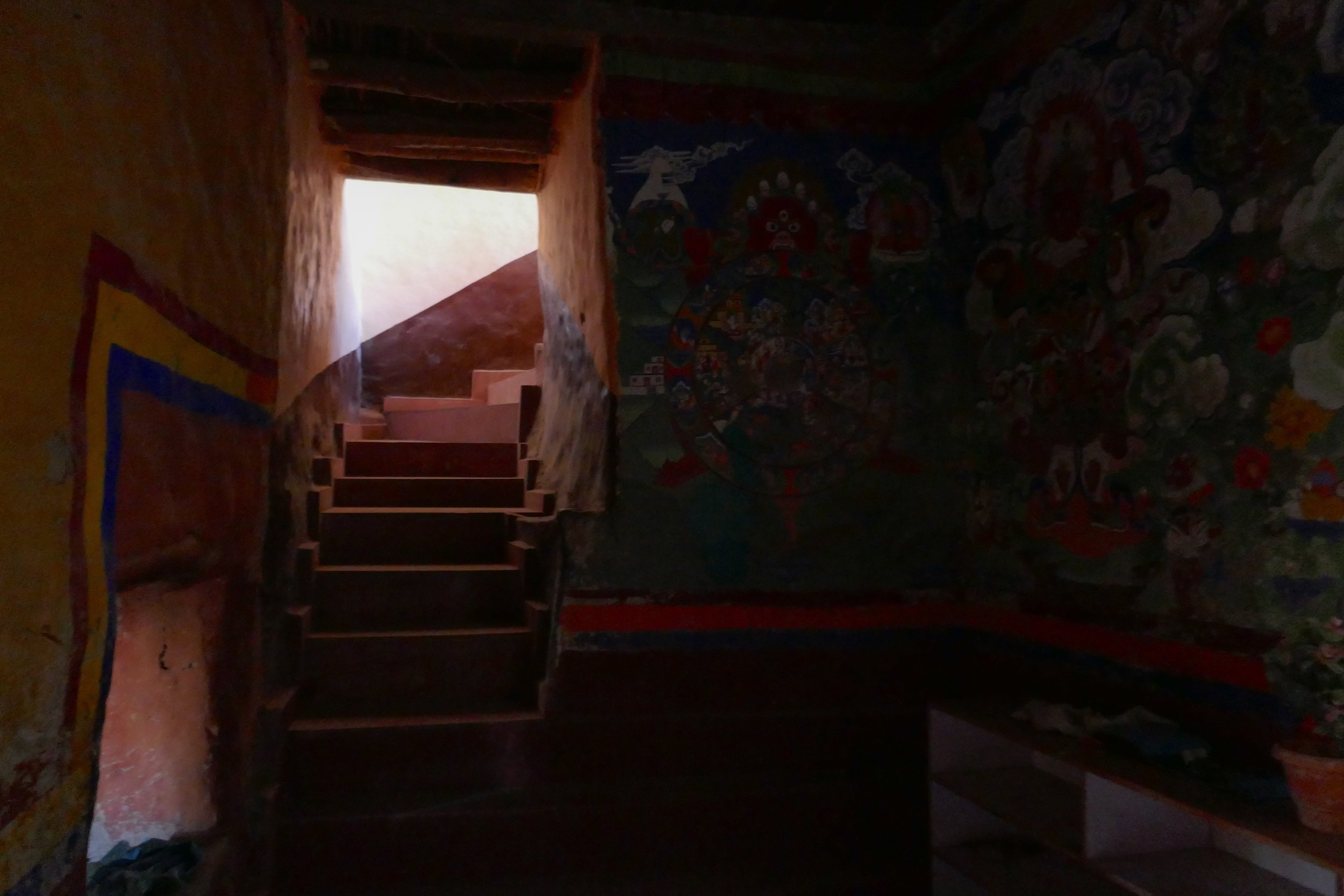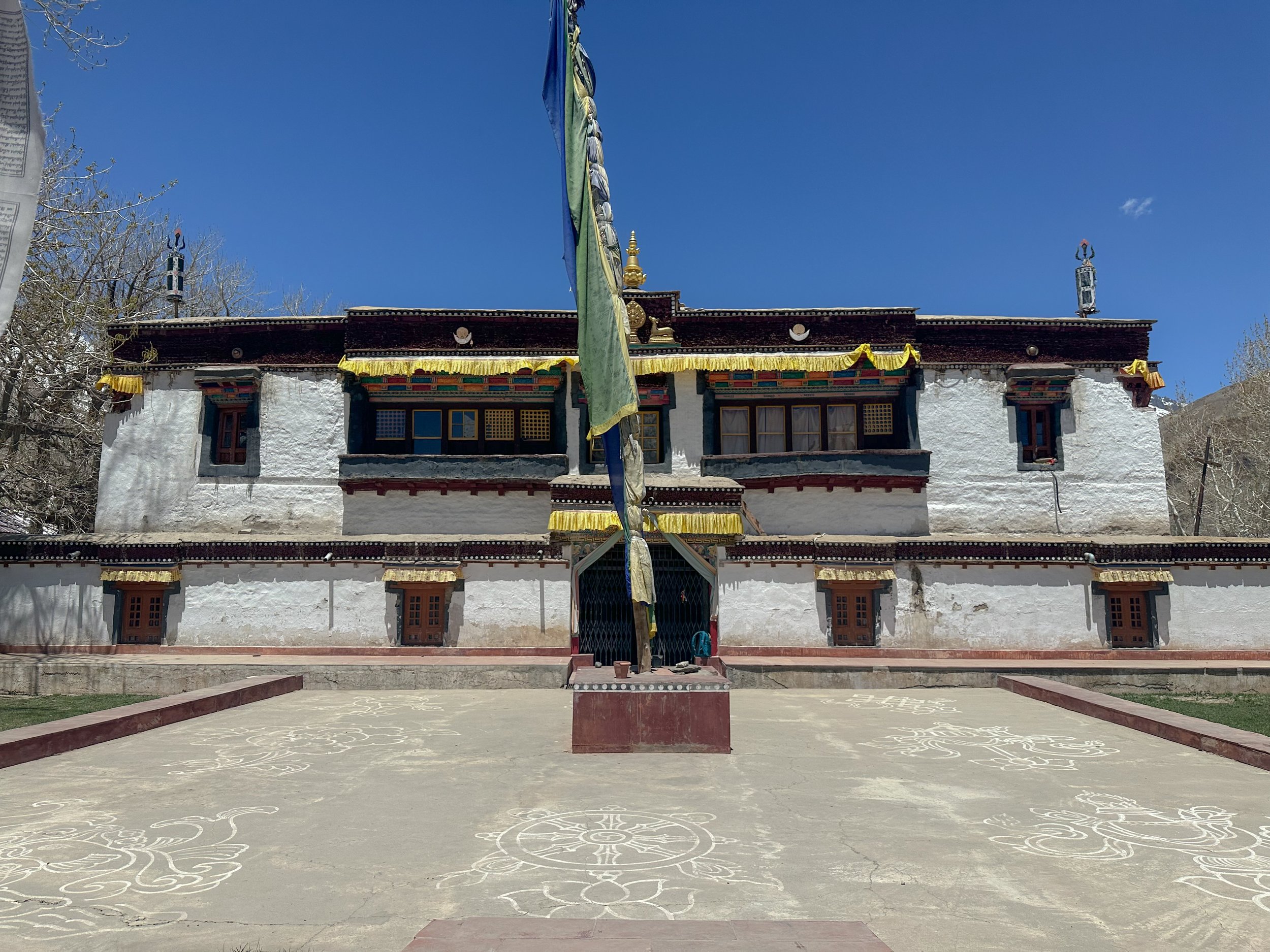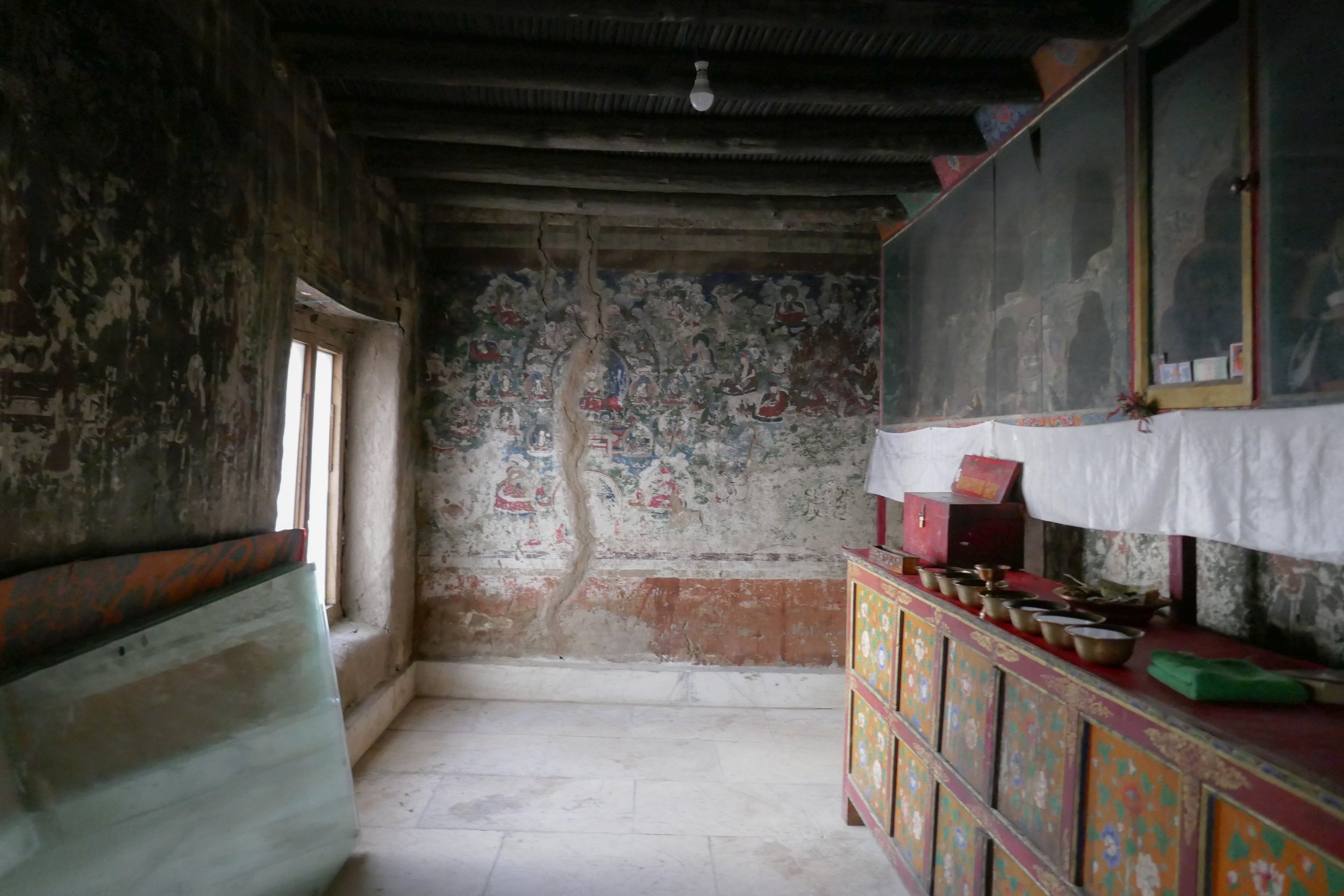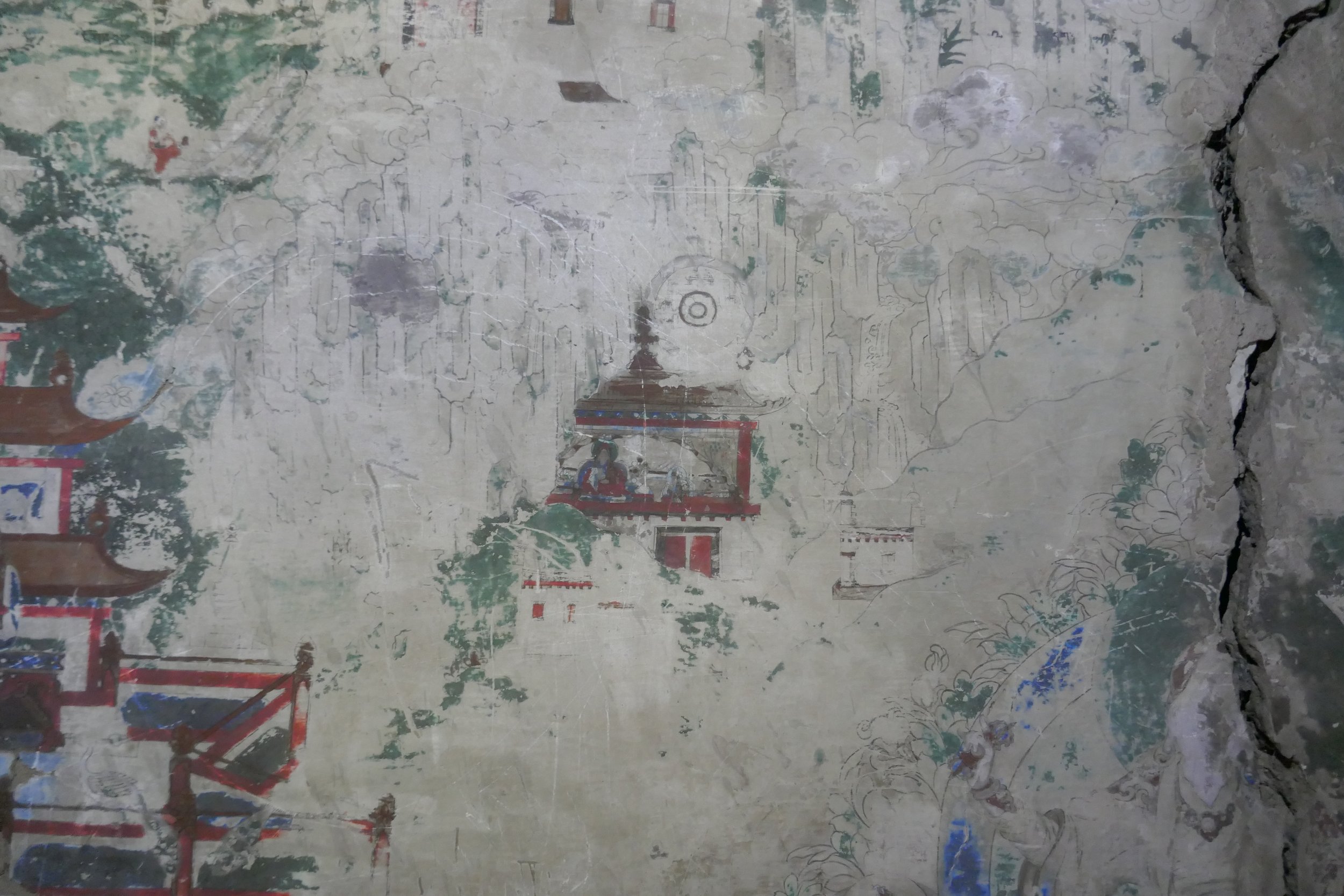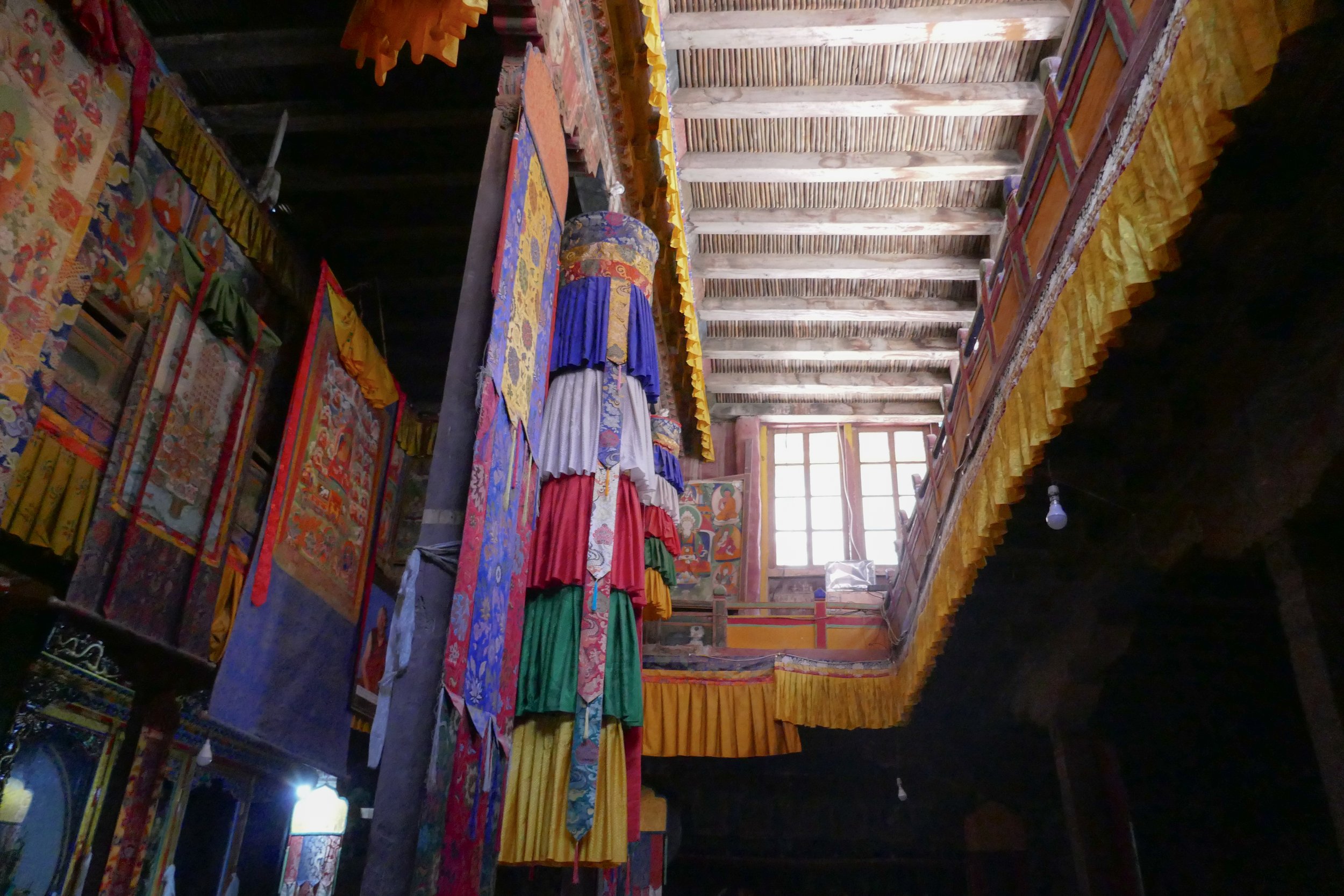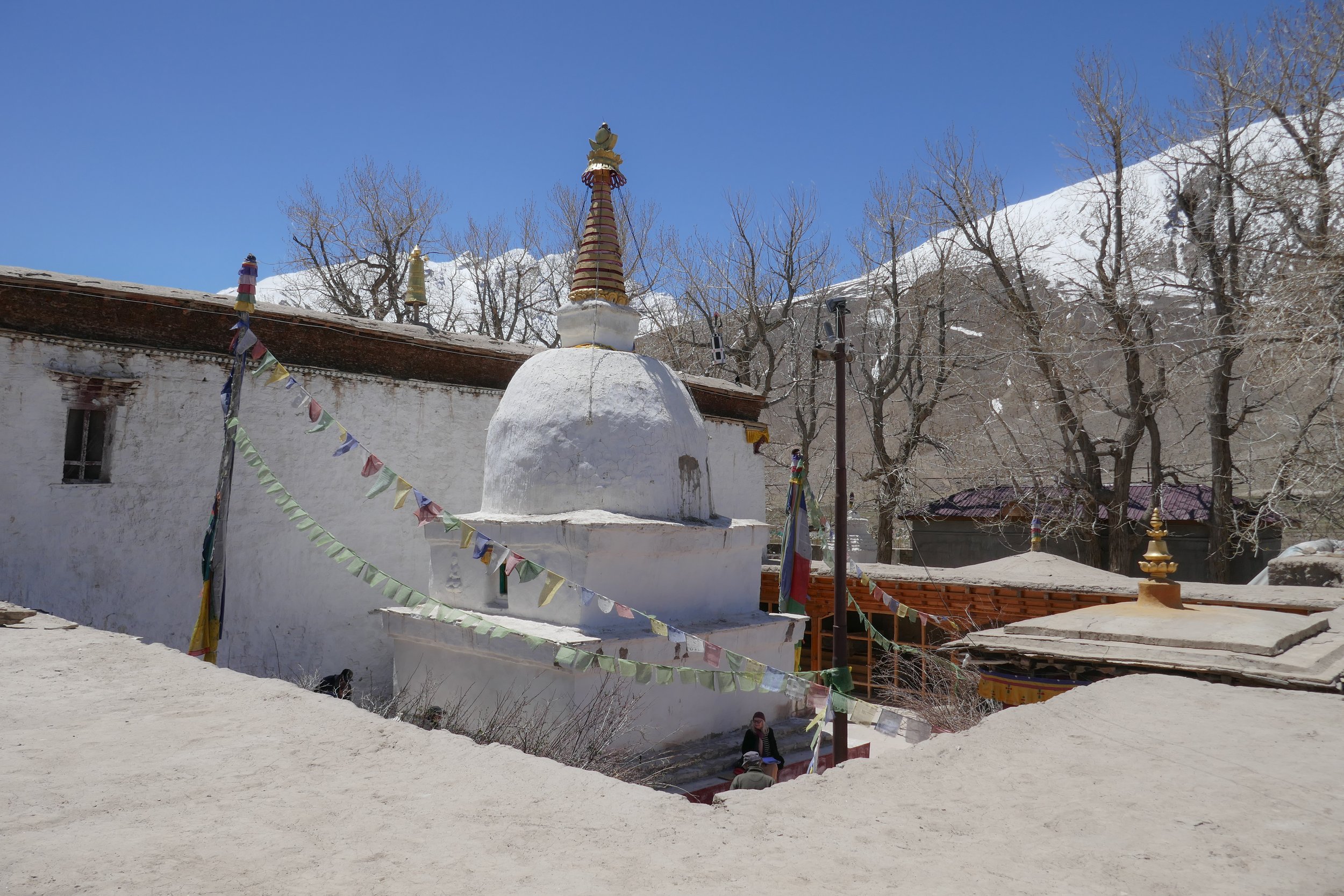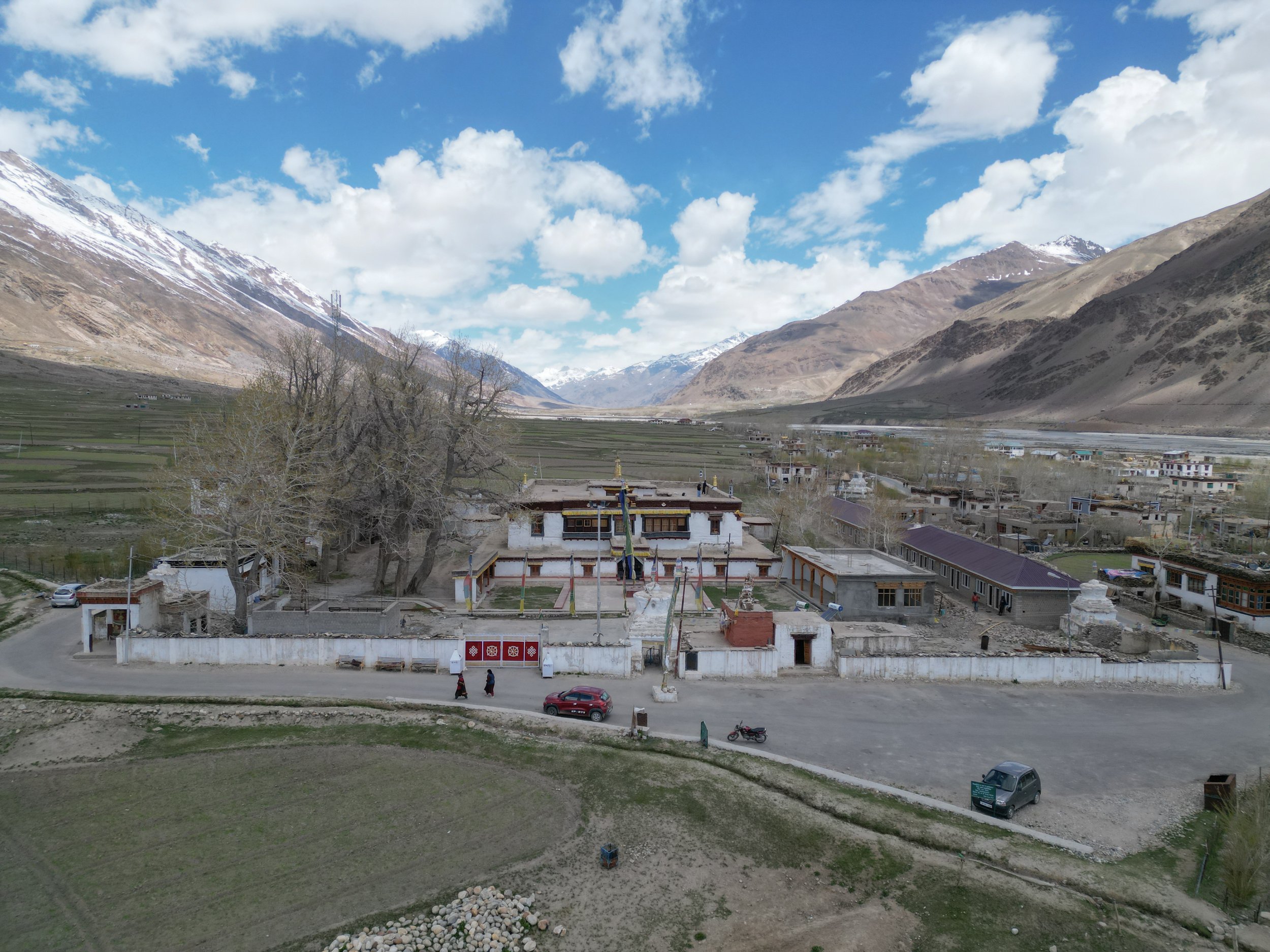
Sani Khar Gonpa
Sani Monastery is said to have been established 1,500 years after the Kanika Chorten was built on the site, in the 2nd century A.D. While many scholars highlight the lack of data to support or refute this claim, the chorten in Sani Village is widely regarded as Ladakh's oldest stupa and possibly its oldest Buddhist site, despite being replastered almost annually.The site itself is unusual among monasteries in Zanskar, as it occupies a small, flat, entirely enclosed square campus. The oldest spaces at Sani are Guru Lhakhang, dedicated to Padmasambhava and containing rare, 3.D. murals, and the smaller Naropa Lhakhang, located directly behind the Kanika Chorten. The Main Assembly Hall (Dhukhang) has a room for the Tengyur texts and stores all 108 texts of the Kangyur script, which are recited by monks who gather from across Zanskar during the annual Sani Nesjal festival. These spaces and their respective ancient artwork and texts are currently at risk of water damage due to the increased precipitation and snowmelt that seeps in through the Monastery’s packed mud roofs. Religious organizing, like the Nesja festival, is Sani Monastery’s primary role, as it has long operated under Bardan Monastery and regularly hosts Bardan’s monks for ceremonies and rituals. It therefore serves as the primary Monastery for only Sani village and has historically been home to very few monks of its own. These days, only two monks live at Sani, the Monastery’s keykeeper and his helper. The monastery still maintains close ties to Buddhist monasteries,sponsors, and Bhutan, as it is, along with Bardan, one of the few remaining Drukpa Kagyu monasteries in Zanskar. Whereas most monasteries in Zanskar historically sent their monks to study at monasteries in Tibet, and now in southern India, Sani Monastery has historically sent numerous young monks for exchange in Bhutan.
